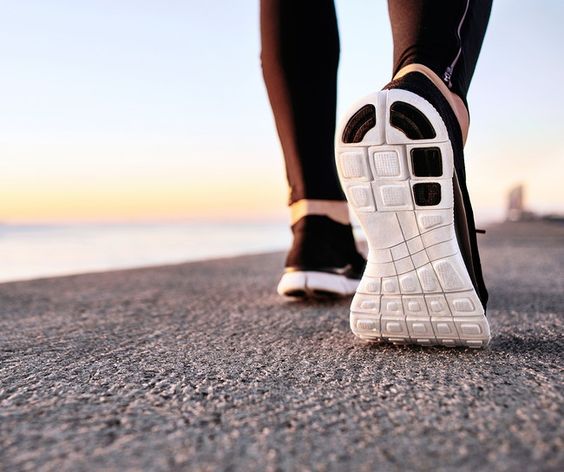For over 20 years of my life, my relationship with running has been something like this:
For most of the year, I only run if I’m late for something, if it’s necessary for a life situation or when I’m playing a sport. Then, for maybe a month, sometimes less, I add ‘going for a run’ to my weekly activity regime. These runs often involved feeling unfit, out of breath, hating almost every minute of it, and having general dread leading up to it. Unfortunately, the exhilaration of completing the run, commonly known as ‘runners high’ was not enough to balance out the negatives, and ultimately, time and time again, I lost interest and quit.
It became pretty clear after each of these phases, that I just wasn’t cut out to be the person who decides at the crack of dawn, after a long day, or on weekends, to go for a run. Who competes in charity runs, fun runs or even marathons and always seems to be showing a beautiful view with their strava stats or smiling with a coffee and a croissant afterwards on their Instagram stories.
You can imagine my surprise when, 5 months after what I thought would be another phase, I am still running consistently, twice a week, up to 15kms! So how did I keep the momentum going? Here are the things I did differently this time, and my top tips to start running as a beginner who never thought they could call themself a runner.
Just Start
Let’s begin with the hardest thing: starting. Most people’s issue, including my own, was not being able to find the motivation to run. tHE THING IS, IF YOU’RE WAITING TO FIND THE MOTIVATION TO GET UP AND DO SOMETHING, it may never come. This applies to all things, not just exercising, relying on motivation for action will regularly leave you feeling disappointed. Discipline and habits, not motivation, will drive you to achieve what you want in life, whether it’s your first 5kms or a savings goal. So how do we become disciplined and allow habits to stick?
Build a habit
Well, first you want to make the action as easy as possible by removing friction. That means laying out your running clothes the night before if you have to wake up early, or having them ready for you when you walk in the door from work or school. Check well in advance that your earphones are charged if you like to listen to something while you run. Make sure your running clothes are comfortable – not too hot or cool, and make sure your shoes are supportive. Have quick snacks available if you require pre-run fuel. If you’re unfamiliar with your running route, revise it on maps prior. Repeating each of these small actions lets you create a routine around your run, reducing friction and increasing the likelihood that you’ll follow through with it.
With some solid pre or post-run rituals in place, you should also try to create a schedule for your runs. For example, I will do a shorter run on Tuesday mornings and a longer one on Saturdays. On the other days of the week, I will go to the gym or have a rest day. Of course, it’s important to be flexible with your schedule. If it’s raining, I will just swap a gym day with my run day, some weeks I have to skip a run altogether, which is fine as long as I can go back to my routine in the following week or so. Work at a running schedule that suits you – do you prefer to run in the mornings or evenings? Weekdays or weekends? The more easily the runs fit into your life, the more likely you are to stick to the habit.
Make it rewarding
To take it up a notch, look at the ways you can make your run more enjoyable. Music or podcasts can be a massive help in providing a distraction or some entertainment while you run. Take some time to create a playlist in advance of songs you like, or queue up a podcast that you want to listen to.
I am lucky enough to run through a beautiful nature reserve, with views of the city and water and paths that weave small patches of forest. This makes the runs far more enjoyable, as I’m able to take in the surroundings. If you aren’t close to a nice park or beach, and your neighbourhood is boring, why not take a running excursion? If you have some extra time as a one-off or occasional treat, find a trail with nice scenery and drive there to do your run. You’ll be amazed at how much of a difference a change of scenery can make.

Now let’s get to the actual running part. Here are a few tips to improve your runs and increase the chances that they become a habit:
Track your progress
A huge factor that has kept me going throughout the last 5 months has been tracking my progress. There are plenty of free apps available where you can track your runs. These show your average pace, total time and distance and other factors that contribute to your overall performance. A log is created each time you run, that way you can go back and compare your performance factors and track your progress. Strava is a very popular run mapping app, others include Map My Run and Runkeeper, but there are so many available, so find one that works for you.
Pace yourself
I know it’s quite late in the piece, but my pace was easily the biggest factor for success in my most recent running journey. A big reason why I quit running over and over again, is because I was never doing it properly, to begin with. Previously, I thought going for a run meant running as fast as you can without going into a full-blown sprint. This meant I tired very quickly, could barely breathe, felt a lot of pain in my legs and had to walk portions of the run. This time around, it was a tik tok running tip about pace that changed my approach completely. GO SLOW. I mean slow, slow. To build up a base, and be able to increase your distance, improve your endurance, and eventually your speed, you need to start by running at a very slow pace in comparison to what you’re used to. At first, it might feel weird and uncomfortable, because you know you can go faster, but this is the key to being able to keep up a longer, sustained pace, and not tiring after the first km. When I paced myself for the first time, I was shocked at how much longer I could run without needing to stop and walk to catch my breath or stop my legs from hurting. Of course, you should still walk as much as you need when you’re first starting, but slowing your pace will set you up for longer, sustained runs as you improve.
Follow a Program
Following a program is one thing I didn’t do this time around, but I probably would have improved more quickly if I had. Programs are so helpful for beginners, or even people wanting to increase their distance and improve their running. They keep you accountable, give structure and provide expert tips on technique.
Do Some Research
If you’re a beginner, you probably won’t be wanting to invest in a running coach just yet. Luckily for us though, there is so much free online content available from professional runners and their coaches. Youtube and running websites have a wealth of knowledge available on things such as technique, stretching and recovery and even what foods to eat before and after your runs. If you’re starting to get into a routine and want to make some improvements, these resources are a fantastic way to start.
If you want to finally call yourself a runner, there’s no better time than now to start. Follow these tips and see how you go, there’s nothing to lose!




